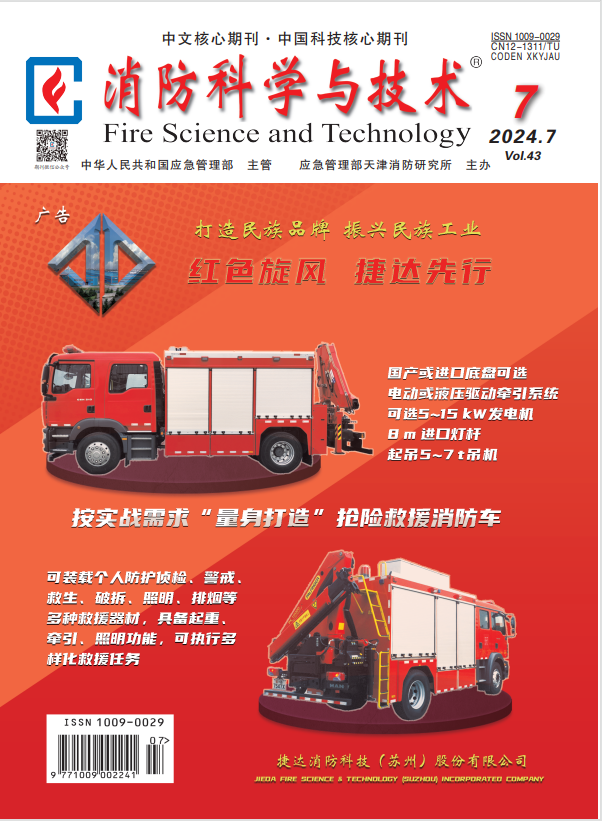|
|
Experimental study on the attitude of the helicopter fire fighting bucket
Xie Jiayu, Zhu Yanan, Ruan Tao, Liang Runjie, Li Jinpeng
2024, 43 (7):
982-989.
To quantitatively study the influence of the posture of the helicopter fire bucket on the accuracy of watering and the stability of the helicopter during the firefighting process, a helicopter fire bucket posture experimental platform was constructed to design and carry out scaled size tests of the fire bucket. Conduct helicopter fire bucket swing tests considering four factors: incoming flow velocity, mass, rope length, and installation of tail fins. Use a data acquisition system with attitude sensors and tension sensors as the core to collect the attitude angle of the fire bucket and the vertical force of the rope during the experiment. The results show that the range of attitude angle changes is 7.85°, 20.40°, and 34.84° when the inflow velocity is 8, 16, and 24 m/s. The difference between the maximum vertical force on the rope and its own gravity is 0.18, 1.13, and 2.29 N; When the mass is 301, 271, and 241 g, the range of attitude angle changes is 17.45°, 20.40°, and 38.27°. The difference between the maximum vertical force on the rope and its own gravity is 0.95, 1.13, and 1.17 N; When the length of the rope is 100, 150, and 200 mm, the range of attitude angle changes is 22.41°, 20.40° and 19.61°. The difference between the maximum vertical force of the rope and its own gravity is 1.93, 1.79, and 1.56 N; Orthogonal experimental analysis shows that the degree of influence for different working conditions in descending order is inflow velocity>rope length>mass, with inflow velocity having a significant impact on the experimental results (P<0.01); The attitude angle variation range of helicopter fire buckets with or without tail fins is 15.78° and 55.76°, and the difference between the maximum vertical force on the rope and its own gravity is 0.64 N and 1.06 N. In summary, reducing the inflow velocity, increasing the mass of the fire bucket, increasing the length of the rope, and installing tail fins can effectively reduce the amplitude of the posture change of the fire bucket and improve the uniformity of vertical force, thereby optimizing the sprinkler accuracy and helicopter stability.
Related Articles |
Metrics
|



